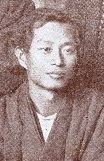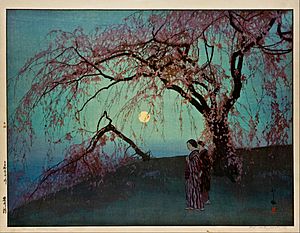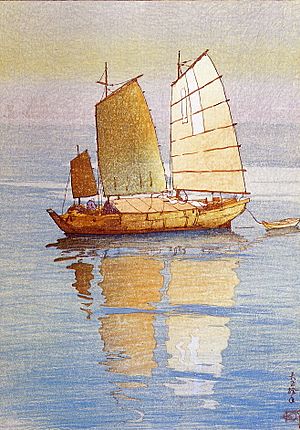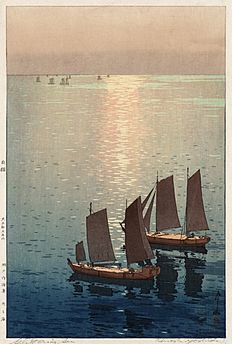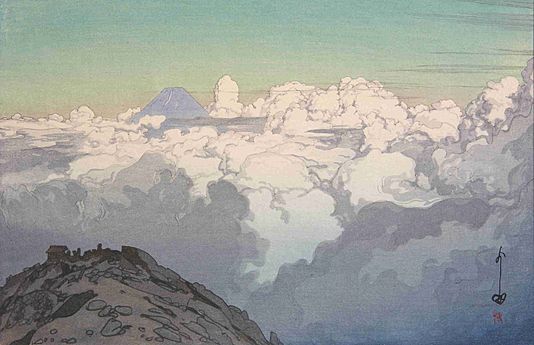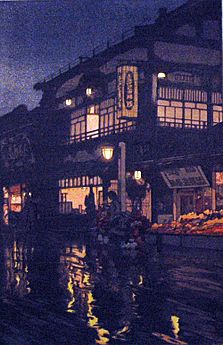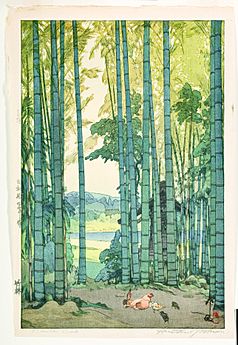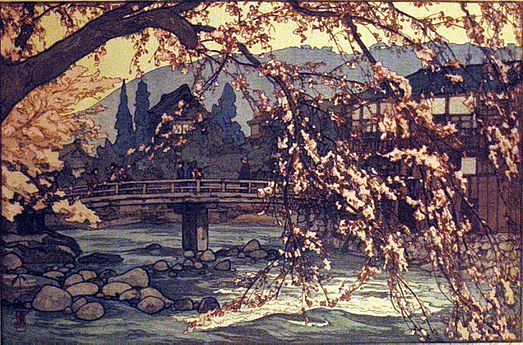Hiroshi Yoshida facts for kids
Hiroshi Yoshida (born September 19, 1876 – died April 5, 1950) was a famous Japanese painter and woodblock printmaker from the 20th century. He is known as one of the best artists of the shin-hanga style. He was especially famous for his beautiful landscape prints. Yoshida traveled a lot. He was well-known for creating pictures of places outside Japan. He made these using traditional Japanese woodblock art. Some of these places include the Taj Mahal, the Swiss Alps, the Grand Canyon, and other National Parks in the United States.
About His Life
Hiroshi Yoshida was born Hiroshi Ueda in Kurume, Fukuoka, Japan. This was on September 19, 1876. He showed a talent for art from a young age. His adoptive father, who taught painting, encouraged him.
When he was 19, he went to Kyoto to study art. He learned from Tamura Shoryu, a well-known teacher of Western-style painting. After that, he studied in Tokyo for three more years. His teacher there was Koyama Shōtarō.
In 1899, Yoshida had his first art show in America. It was at the Detroit Institute of Arts. He then traveled to Boston, Washington, D.C., Providence, and parts of Europe.
In 1920, Yoshida created his first woodcut print. This was at the Watanabe Print Workshop. Watanabe Shōzaburō organized this workshop. He was a publisher and a big supporter of the shin-hanga art movement. However, Yoshida's work with Watanabe did not last long. This was partly because Watanabe's shop burned down. This happened during the 1923 Great Kantō earthquake on September 1, 1923.
In 1925, Yoshida started his own art studio. He hired skilled carvers and printers. All the prints were made under his careful watch. Yoshida combined different art ideas. He mixed the teamwork of ukiyo-e art with the "artist's prints" idea of sōsaku-hanga. This created a new style of his own.
Yoshida took his last sketching trip when he was 73. He visited Izu and Nagaoka. He painted his last works, The Sea of Western Izu and The Mountains of Izu. He became sick on this trip. He returned to Tokyo and passed away at his home on April 5, 1950. His tomb is in the Ryuun-in temple in Koishikawa, Tokyo.
His Artistic Style
Hiroshi Yoshida learned to paint using Western oil painting methods. This style became popular in Japan during the Meiji period. Yoshida often used the same woodblocks for his prints. But he would change the colors to show different moods. A great example of this is his print Sailing Boats from 1921.
Yoshida traveled widely and met many Americans. This greatly influenced his art. In 1931, he published a series of prints. These showed scenes from India, Pakistan, Afghanistan, and Singapore. Six of these prints were different views of the Taj Mahal. They showed the building in various moods and colors.
His artworks are displayed in many museums around the world. These include the British Museum, the Toledo Museum of Art, and the Brooklyn Museum. His art can also be seen at the Harvard Art Museums, the Saint Louis Art Museum, and the Dallas Museum of Art. Other museums include the University of Michigan Museum of Art, the Clark Art Institute, and the Portland Art Museum. You can also find his works at the Indianapolis Museum of Art, the Carnegie Museum of Art, and the Tokyo Fuji Art Museum. The Detroit Institute of Arts, the Seattle Art Museum, and the Museum of Fine Arts, Boston also hold his art. Finally, his works are at the Fine Arts Museum of San Francisco, the Davis Museum at Wellesley College, and the Mount Holyoke College Art Museum.
The Yoshida Family of Artists
The Yoshida family has a long line of eight artists. It includes Kasaburo Yoshida (1861–1894) and his artist wife Rui Yoshida. Their daughter was Fujio Yoshida (1887–1987). Hiroshi Yoshida (1876–1950) was their adopted son. He married Fujio.
Hiroshi's son, Tōshi Yoshida (1911–1995), was also an artist. Toshi's wife, Kiso Yoshida (1919–2005), was an artist too. Another of Hiroshi's sons was Hodaka Yoshida (1926–1995). His wife, Chizuko Yoshida (1924–2017), and daughter, Ayomi Yoshida (born 1958), are also artists.
This group of four men and four women spans four generations. They offer an interesting look at Japanese history and art in the 20th century. Even though they share the same art tradition, the Yoshida family artists have different styles.
Toshi Yoshida and the Yoshida family have used Hiroshi Yoshida's original woodblocks. They have created later versions of his prints, even after he passed away. Prints made under Hiroshi Yoshida's direct care have a special "jizuri" seal. Jizuri means self-printed (自摺, Jizuri). This seal shows that Hiroshi Yoshida was actively involved in making that print. Hiroshi Yoshida's signatures can look different. This depends on who sold the print and when it was made. Prints sold in Japan usually do not have a pencil signature or English title.
Gallery


